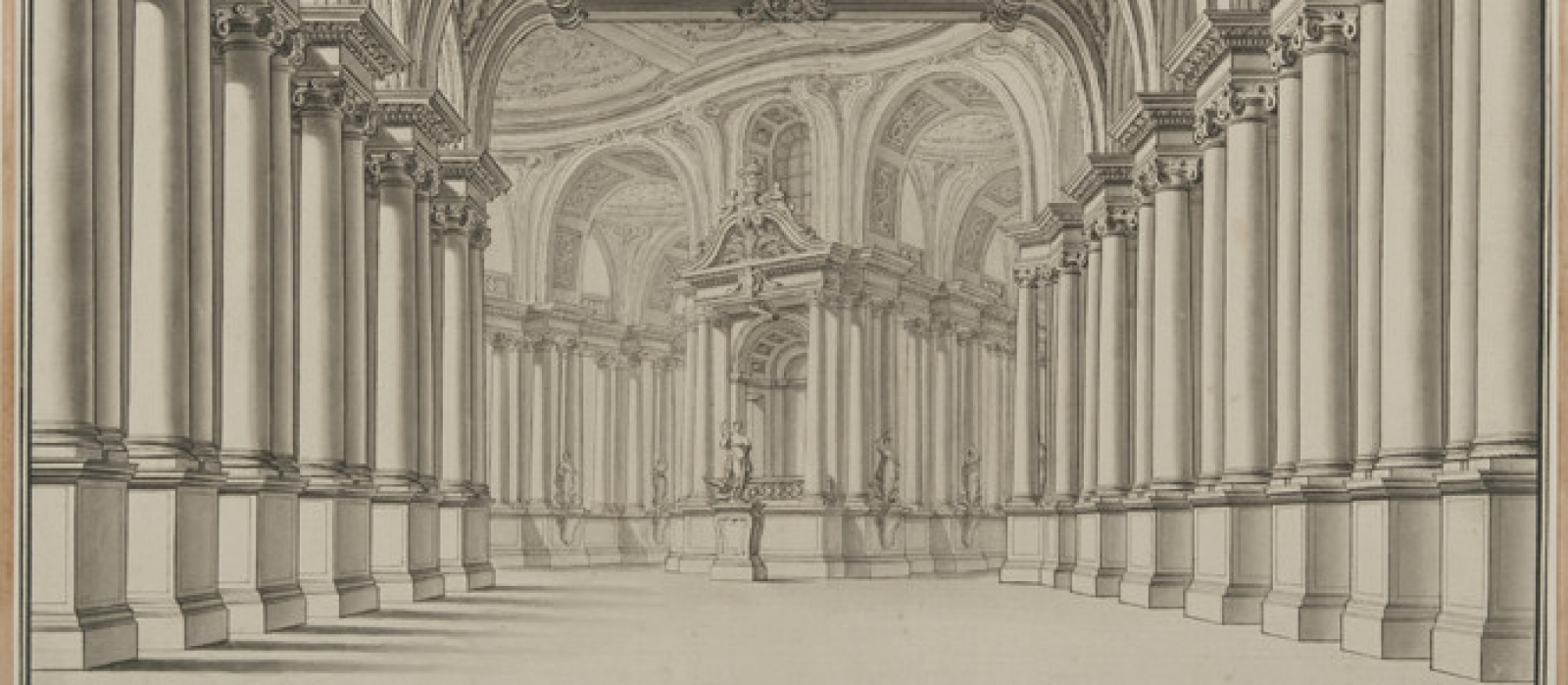Imagined Architecture - Drawings from the Collections of the Fondazione Giorgio Cini
The Fondazione Giorgio Cini collections contain numerous drawings for illusory architecture: projects, sketches, ideas, modelli, copies, and bozzetti for engravings, related to various genres of ornamentation, quadratura, and stage design. Most of them are works characterising the collection of the composer and collector Antonio Certani. Accounting for the largest number of drawings in the Institute of Art History Drawings and Prints Cabinet, the Certani Collection consists of thousands of sheets mainly from the Bolognese and Emilian school of the 16th to the 19th century. In a game of truth and fiction, the illusory architecture painted by the virtuoso artists introduces the viewer into a simulated, metamorphic space, which, transfigured, seduces the eye and captures the mind in a play of mirrors and “ingenious deceptions”, capable of transforming “any old hovel… into a palace” (Roberto Longhi).
Among the artists represented in the collection, there are specialists in this particular craft who were often also skilled in architectural design, such as Agostino Mitelli, Angelo Michele Colonna and the principal members of the Bibiena family, a well-known dynasty of scenographers and architects. Alongside the quadratura drawings, the collection also contains numerous drawings of ornamentation and decoration, including the fascinating group of five hundred drawings attributed to the Manifattura Aldrovandi, the English-style ceramics factory founded in Bologna in 1794-1795 by Count Carlo Filippo Aldrovandi; the factory mainly produced earthen pottery and tableware.
Another of the most significant groups brings together sketches, ideas and designs for stage sets, with hundreds of valuable drawings documenting the genre of Bolognese scenography in the Baroque and
Neoclassical ages: among the largest, most significant collections are two groups attributed to the Bibiena and the skilful Antonio Basoli.
The exhibition presents a selection of the most beautiful and representative pieces taken from these collections. the aim is to offer examples and illustrate ways of thinking on architectural drawing as a conceptual and design stage for painted architecture. At the same time, the exhibition documents some of the developments of the Bolognese school and tradition, which, in terms of continuity, variety and quality of results achieved, can very eectively represent the evolution of a genre that was popular in Italian and European art in the 17th and 18th centuries. The first section will explore the development of quadratura and illusory architecture,
with examples of drawings for the temporary architecture of triumphal arches, funeral stage sets, and celebratory decorations. Ample space will also be given over to stage architecture as well as drawings pertaining to ornamentation and models for the decorative arts, linked to illusionistic architecture by the special relationship created with the faux building.
The last section, in a dialectical relationship with rest of the itinerary, will offer some examples of architectural projects (with elevations, axonometric drawings and plans) for buildings that were actually constructed, mainly in the Neoclassical age, when the relationships between architectural design, revival of the antique, and utopia were particularly fecund. Also on show, alongside the designs by Bolognese architects referring to specific types, such as the villa, public building, and garden pavilion, there are some superb watercolour illustrative plates (also preserved in the Fondazione Giorgio Cini) by Giacomo Quarenghi, architect to Empress Catherine the Great, particularly active in the construction of Neoclassical Saint Petersburg.

